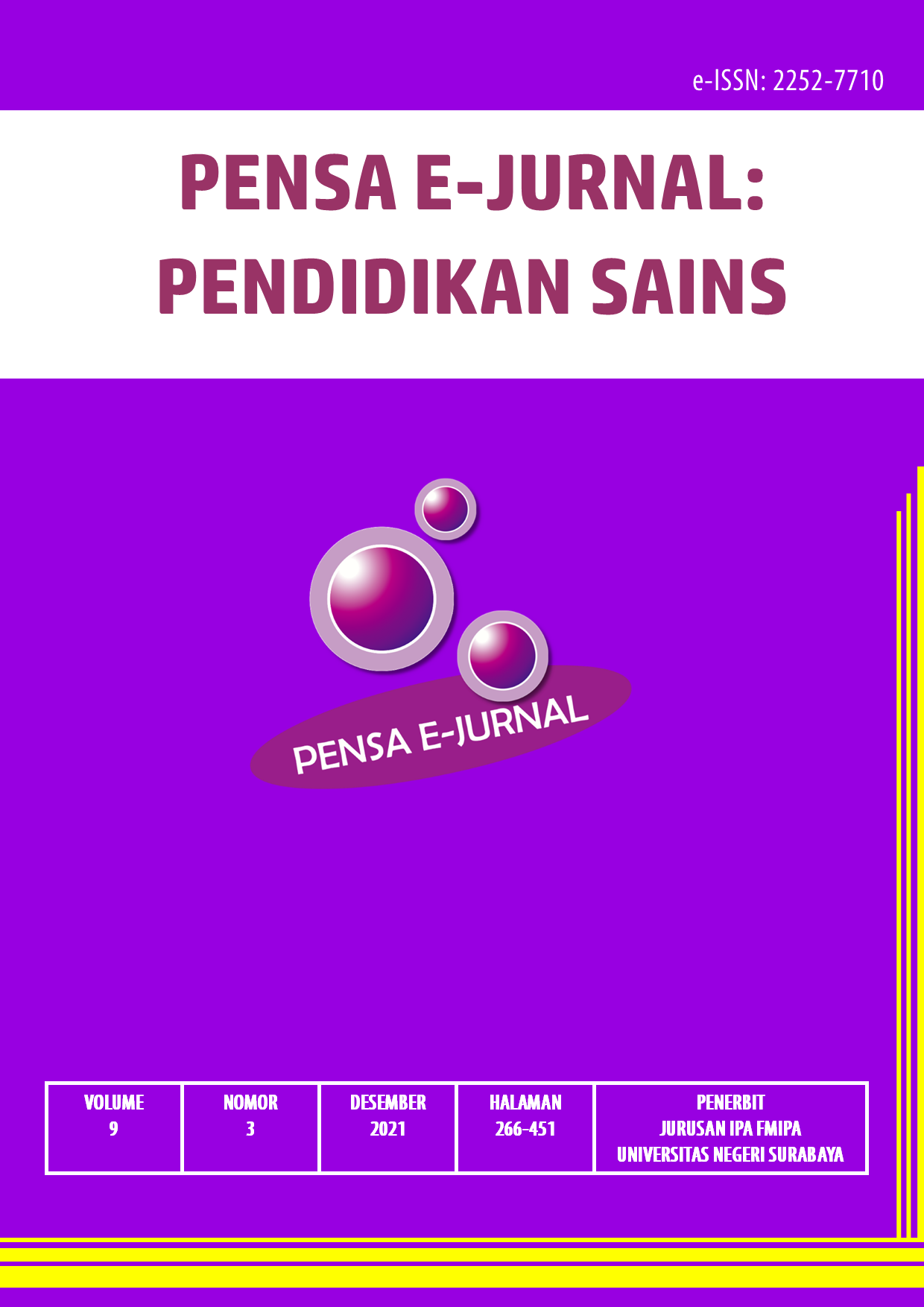ANALISIS BUKU AJAR IPA SMP TERKAIT KOMPONEN STEM (SCIENCE, TECHNOLOGY, ENGINEERING, MATHEMATICS) PADA MATERI TEKANAN ZAT
DOI:
https://doi.org/10.26740/pensa.v9i3.38653Keywords:
Textbooks, STEM, pressureAbstract
This study aimed to determine the STEM components (Science, Technology, Engineering, Mathematics) contained in the VIII grade science textbook on pressure chapter. The research design used is descriptive research with a quantitative approach. The research object used in this study was the science textbook with three different publishers, that are Kemendikbud, Erlangga, and Quadra. The research instrument used in this study was an observation sheet arranged based on STEM components. The data collection technique was conducted by observing three types of science books related to the STEM component in the pressure chapter. The data analysis technique used in this research is content analysis. This study adds up the emergence of STEM components in textbooks, then presented in percentage form, after that determines the average percentage of STEM components analyzed from science textbooks, and finally provides descriptive analysis based on the data that has been obtained in each science textbook. The results of this study indicate that the three books analyzed contain STEM components in them. The average percentage of the emergence of STEM components in these three books is the science component of 56,7%, the technology component of 10,7%, the engineering component of 16,2% and the mathematics component of 16,3%. The conclusion of this research is the three textbooks already include STEM components and are suitable for use in facing the challenges of 21st century learning.
Downloads
Downloads
Published
How to Cite
Issue
Section
 Abstract views: 830
,
Abstract views: 830
, PDF Downloads: 880
PDF Downloads: 880

















